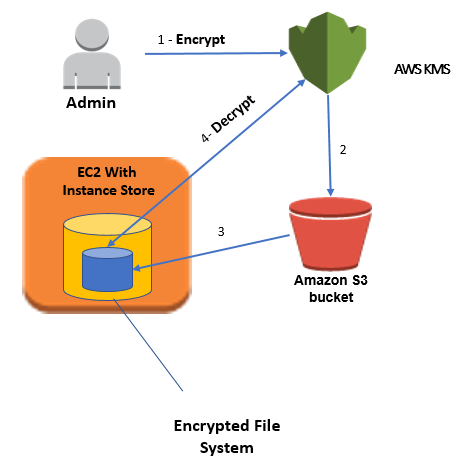AWS Security Blog
Tag: Amazon RDS
How to implement single-user secret rotation using Amazon RDS admin credentials
You might have security or compliance standards that prevent a database user from changing their own credentials and from having multiple users with identical permissions. AWS Secrets Manager offers two rotation strategies for secrets that contain Amazon Relational Database Service (Amazon RDS) credentials: single-user and alternating-user. In the preceding scenario, neither single-user rotation nor alternating-user rotation would […]
Detect threats to your data stored in RDS databases by using GuardDuty
With Amazon Relational Database Service (Amazon RDS), you can set up, operate, and scale a relational database in the AWS Cloud. Amazon RDS provides cost-efficient, resizable capacity for an industry-standard relational database and manages common database administration tasks. If you use Amazon RDS for your workloads, you can now use Amazon GuardDuty RDS Protection to […]
Improve security of Amazon RDS master database credentials using AWS Secrets Manager
Amazon Relational Database Service (Amazon RDS) makes it simpler to set up, operate, and scale a relational database in the AWS Cloud. AWS Secrets Manager helps you manage, retrieve, and rotate database credentials, API keys, and other secrets. Amazon RDS now offers integration with Secrets Manager to manage master database credentials. You no longer have to manage master database credentials, such as […]
Enabling data classification for Amazon RDS database with Macie
August 21, 2025: Steps 2 and 3 have been updated in this post to reflect the updated console. Customers have been asking us about ways to use Amazon Macie data discovery on their Amazon Relational Database Service (Amazon RDS) instances. This post presents how to do so using AWS Database Migration Service (AWS DMS) to […]
Use a single AWS Managed Microsoft AD for Amazon RDS for SQL Server instances in multiple Regions
Many Amazon Web Services (AWS) customers use Active Directory to centralize user authentication and authorization for a variety of applications and services. For these customers, Active Directory is a critical piece of their IT infrastructure. AWS offers AWS Directory Service for Microsoft Active Directory, also known as AWS Managed Microsoft AD, to provide a highly […]
How to track changes to secrets stored in AWS Secrets Manager using AWS Config and AWS Config Rules
On April 20th, AWS Config announced support for AWS Secrets Manager, making it easier to track configuration changes to the secrets you manage in AWS Secrets Manager. You can now use AWS Config to track changes to secrets’ metadata — such as secret description and rotation configuration, relationship to other AWS sources such as the […]
How to securely provide database credentials to Lambda functions by using AWS Secrets Manager
April 29, 2022: This post has been updated based on working backwards from a customer need to securely allow access and use of Amazon RDS database credentials from a AWS Lambda function. In this blog post, we will show you how to use AWS Secrets Manager to secure your database credentials and send them to […]
The AWS Shared Responsibility Model and GDPR
The EU’s General Data Protection Regulation (GDPR) describes data processor and data controller roles, and some customers and AWS Partner Network (APN) partners are asking how this affects the long-established AWS Shared Responsibility Model. I wanted to take some time to help folks understand shared responsibilities for us and for our customers in context of […]
How to Protect Data at Rest with Amazon EC2 Instance Store Encryption
April 25, 2023: We’ve updated this blog post to include more security learning resources. Note: By default, an instance type that includes an NVMe instance store encrypts data at rest using an XTS-AES-256 block cipher. See this FAQ about NVMe-supported instance types. If you’re using an NVMw instance type, then data at rest is encrypted […]
How to Manage Secrets for Amazon EC2 Container Service–Based Applications by Using Amazon S3 and Docker
Docker enables you to package, ship, and run applications as containers. This approach provides a comprehensive abstraction layer that allows developers to “containerize” or “package” any application and have it run on any infrastructure. Docker containers are analogous to shipping containers in that they provide a standard and consistent way of shipping almost anything. One […]









